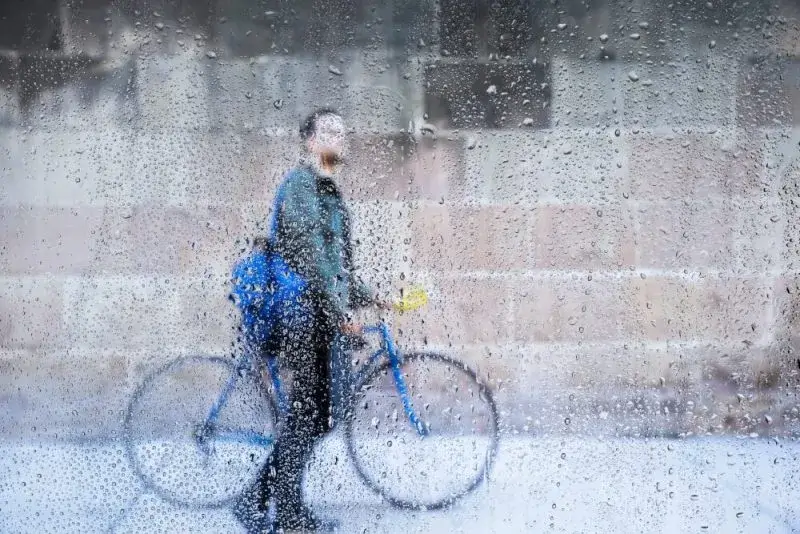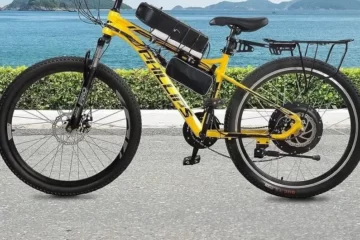Electric bikes (e-bikes) are revolutionizing transportation, offering an eco-friendly and convenient way to navigate the city. But what happens when rain dampens your ride? Fear not, fellow e-cyclists! With a little preparation, you can conquer the commute and enjoy a safe, comfortable ride – rain or shine.
In this article, we will explore the factors to consider when riding an electric bike in wet conditions, the safety precautions you should take, and how to maintain your e-bike to ensure it remains in optimal condition despite exposure to moisture.
Can I Ride An Electric Bike In The Rain?
You can breathe a sigh of relief! Most e-bikes are built with water-resistant components, making them suitable for riding in wet weather. However, it’s important to remember they are not waterproof. Here’s a breakdown:
- Go for a Ride: E-bikes can handle rain and puddles. Their DC batteries won’t cause harm if they get wet.
- Know Your Limits: The battery, controller, LCD screen, and motor are more susceptible to water damage. Understanding your e-bike’s limitations through the user manual is key.
E-Bike Components That Are Most Susceptible to Water Damage
While you might assume your e-bike’s battery is highly water-resistant, it remains one of the most vulnerable components when it comes to water damage. The following components are particularly susceptible:
- The Controller
- LCD Screen
- Motor
It’s crucial to emphasize that the majority of water damage to e-bikes is caused by riders who do not fully understand their e-bike’s limitations, ride recklessly, or neglect the necessary precautions to shield their bike from water infiltration.
Mastering Wet Weather E-Bike Riding:
Conquering rainy commutes requires strategic planning. Here are key factors to consider:
- Embrace Water Resistance: E-bikes come with varying water resistance levels. Check your user manual for specifics.
- Tread Carefully: Wet roads mean reduced traction. Ensure your tires are inflated properly and consider switching to all-weather or rain-specific tires for better grip.
- Be Seen, Be Safe: Rain reduces visibility. Equip yourself with bright clothing, reflectors, and front and rear lights. Fenders are also a great addition to keep water spray at bay.
- Stopping Power: Stopping distances increase in rain. Maintain a safe following distance and brake gently to avoid skidding. Hydraulic disc brakes perform well in wet conditions, offering superior stopping power.
- Battery Blues: Cold and wet weather can slightly reduce battery performance. Plan your route accordingly and consider potential range limitations.
Safety First: Essential Precautions for Rainy E-Bike Rides
Safety is paramount. Here are some precautions to take when riding your e-bike in the rain:
- Dress for Success: Invest in waterproof gear like a jacket, pants, gloves, and shoe covers. Staying dry improves comfort and safety.
- Helmet Hero: Always wear a properly fitted helmet, regardless of the weather.
- Slow and Steady Wins the Race: Reduce your speed in wet conditions. This gives you more time to react and minimizes the risk of skidding.
- Brake with Care: Apply brakes smoothly and progressively to avoid locking up your wheels. Be cautious with regenerative braking if your e-bike has it.
- Puddle Patrol: Try to avoid large puddles or standing water, as they may hide unseen hazards and cause splashing.
Maintaining Your E-Bike for Optimal Performance in Rain
Riding in the rain exposes your e-bike to moisture, so proper maintenance is crucial. Here are some tips:
- Clean and Dry Thoroughly: After a rainy ride, give your e-bike a good clean and dry it completely. Pay close attention to the chain, drivetrain, and electrical components.
- Lube it Up: Reapply chain lubricant after cleaning to prevent rust and corrosion. Opt for a wet-condition specific lubricant.
- Electrical Eye: Regularly inspect electrical connections for signs of water damage or corrosion. Consult your manual or a professional if you notice any issues.
- Battery Buddy: If possible, remove the battery and store it in a dry, room-temperature environment when not in use. This maximizes battery lifespan.
- Brake Check: Ensure your brakes are in top condition, as wet weather can affect their performance. Replace brake pads if necessary.
- Tire TLC: Keep your tires properly inflated and inspect them regularly for cuts or punctures. Remember, wet roads can hide sharp objects.
- Rust Prevention: Apply a rust-resistant coating to metal components like bolts and nuts to prevent rust formation.
Conclusion
Riding an electric bike in the rain is certainly possible, but it requires careful consideration of safety precautions and maintenance practices. By following these guidelines, you can enjoy the benefits of e-bike commuting or leisure riding even in wet conditions while ensuring the longevity of your e-bike.
Remember, safety should always be your top priority, so ride cautiously and stay dry and visible when riding in the rain.





[…] primary concern when designing electric bikes is rider safety. E-bikes can reach high speeds, and without a speed limiter, riders may exceed safe operating […]
[…] choice should depend on your riding style, speed, and personal comfort. Safety should always be your top priority when cycling, so consider the specific risks associated with […]